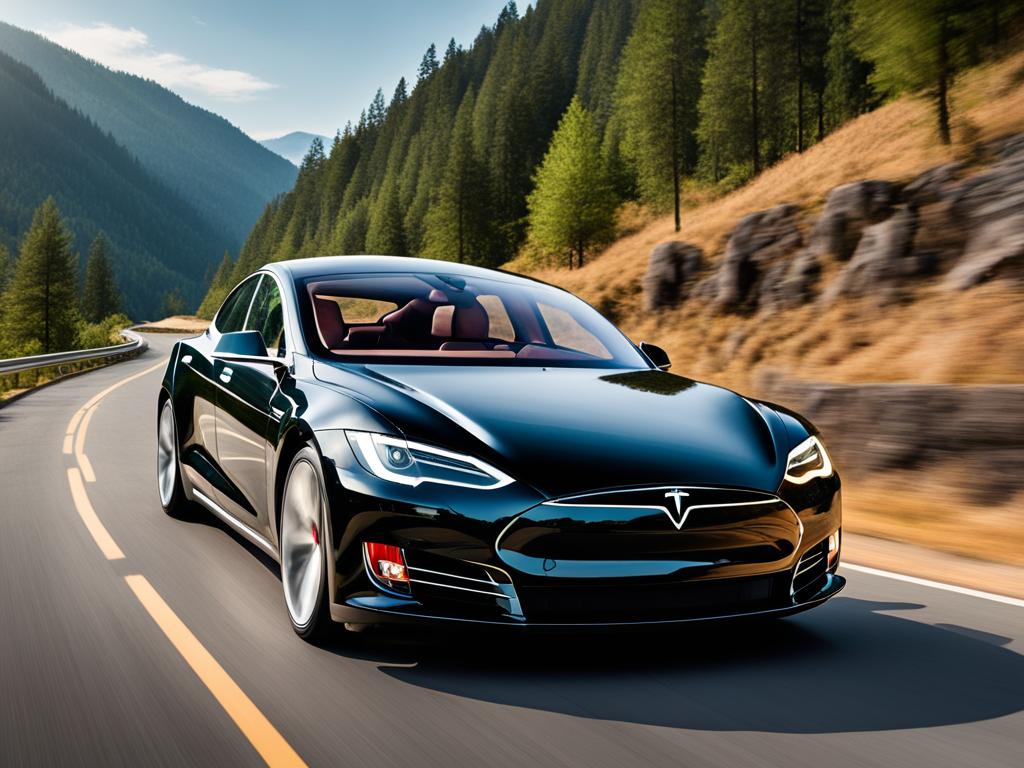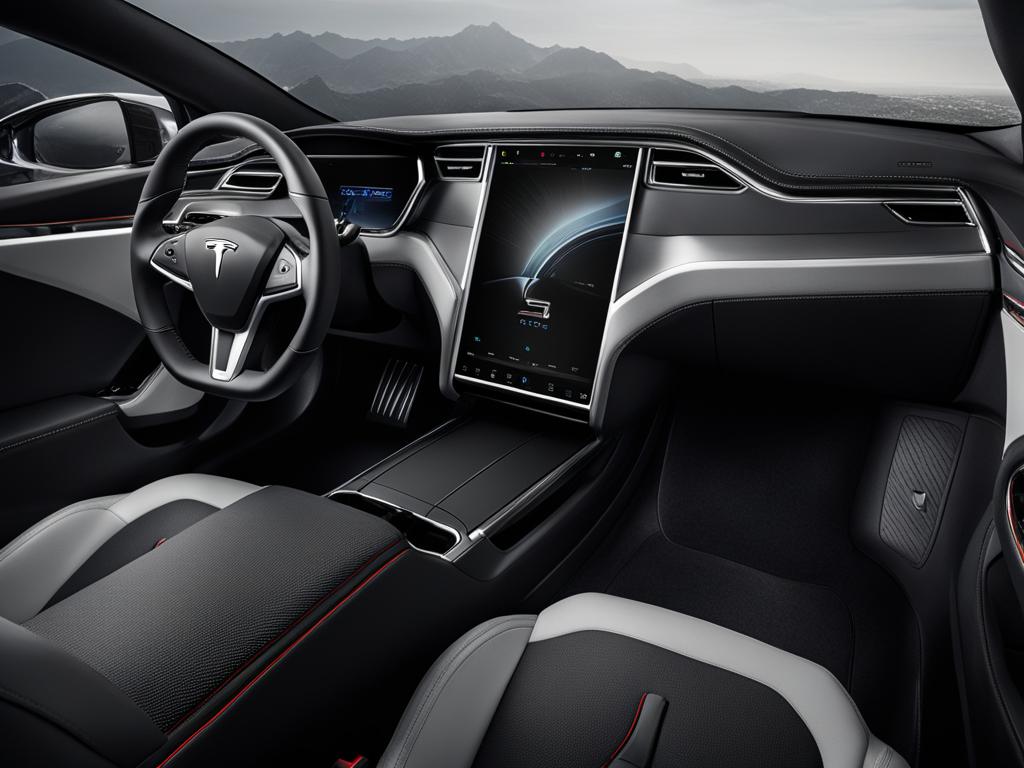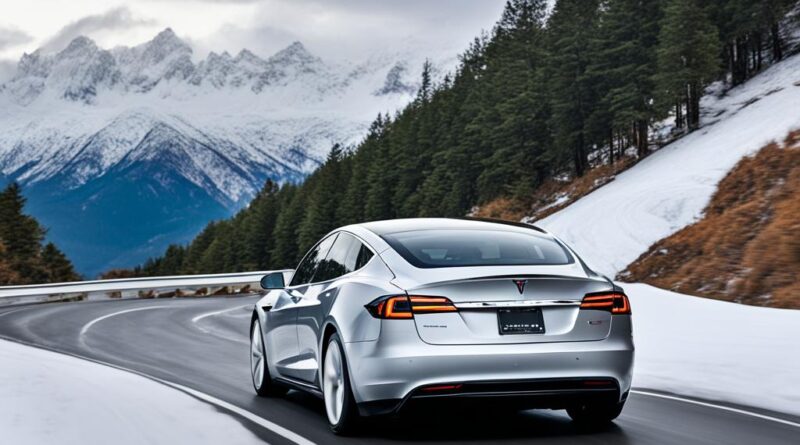Are Tesla’s All Wheel Drive? Know the Facts.
With the rise of electric vehicles and Tesla’s increasing popularity, you might be wondering if all Tesla models are equipped with all wheel drive (AWD). Tesla has been a significant player in the evolution of electric car technology, bringing sustainable transportation to the mainstream market. As you consider the features and capabilities of Tesla models, understanding the availability and benefits of Tesla’s AWD system can help you make an informed decision when purchasing an electric vehicle.
Key Takeaways
- Not all Tesla vehicles have AWD; some older and more affordable models offer rear-wheel drive (RWD) options.
- Contemporary Tesla models predominantly feature AWD, providing improved durability, lower maintenance, and enhanced traction control.
- The Tesla Model S and Model X come standard with AWD, while the Model 3 and Model Y are available in both AWD and RWD.
- AWD in electric vehicles like Tesla models offers numerous advantages, including improved traction control, performance, safety, and handling.
- Tesla’s AWD system is sophisticated, leveraging digital controls to optimize traction, especially in snowy or slippery road conditions.
Tesla’s Approach to Drivetrains: RWD and AWD Explained
Understanding Tesla’s commitment to electric car technology and performance begins with an overview of the various Tesla Model variants and their drivetrain systems. The shift from rear-wheel drive (RWD) to the all-wheel drive (AWD) system has played a vital role in enhancing vehicle performance and safety across Tesla models.
The Evolution from RWD to AWD in Tesla Models
Tesla’s journey commenced with offering both RWD and AWD systems in its vehicle lineup. However, today the Model S and Model X exclusively adopt AWD configurations for standard models. The evolution from RWD to AWD reflects Tesla’s commitment to improving vehicle performance, increasing traction, and enhancing driver safety, especially when navigating adverse driving conditions.
How Tesla’s AWD System Enhances Performance and Safety
A Tesla’s AWD system employs dual electric motors for front and rear wheels, intelligently controlled via software for optimal efficiency. The system selects the most appropriate motor to use for conserving energy, resulting in improved vehicle performance. Moreover, Tesla’s technologically advanced AWD system assists in maintaining traction and control on slippery or uneven roads, adding an extra layer of safety for the driver.
Electric Car Technology: A Blend of Innovation and Practicality
Tesla’s AWD system showcases the right blend of innovation and practicality, positioning the automaker at the forefront of sustainable transportation solutions. The efficient AWD system caters to the dynamic needs of drivers, like handling harsh winter road conditions. However, it’s worth noting that while higher-end models come equipped with AWD systems, the base Model 3 still offers a RWD option. This allows buyers to choose based on their needs and budget.
Are Tesla’s All Wheel Drive: Distinguishing Between Model Variants

Tesla offers a diverse range of model variants, each with different drivetrain options catering to varying driver preferences. Notably, higher-end models such as the Tesla Model S Plaid and Model X come standard with all-wheel drive (AWD), affording faster acceleration and superior handling capabilities. Comparatively, the Model Y and Model 3 are available in both rear-wheel drive (RWD) and AWD variations. AWD models provide a longer range, higher top speed, and more efficient energy usage in contrast to their RWD counterparts.
The distinction between model variants directly impacts performance, as evidenced by various acceleration and top speed comparisons revealing a clear advantage for AWD configurations. In the case of the upcoming Tesla Cybertruck, the differences are even more pronounced across its single motor RWD and multi-motor AWD variants, with significant variations in performance, range, and price. To help you understand the advantages of each model’s drivetrain before making a purchase decision, let’s take a closer look at the key features of Tesla model variants:
| Model Variant | Drivetrain | Range | Top Speed | 0-60 mph Acceleration |
|---|---|---|---|---|
| Tesla Model S Plaid | AWD | 396 mi | 200 mph | 1.98 s |
| Model X | AWD | 360 mi | 163 mph | 3.8 s |
| Model Y (AWD) | AWD | 326 mi | 135 mph | 4.8 s |
| Model Y (RWD) | RWD | 303 mi | 130 mph | 5.3 s |
| Model 3 (AWD) | AWD | 358 mi | 145 mph | 4.2 s |
| Model 3 (RWD) | RWD | 272 mi | 140 mph | 5.8 s |
As you assess the benefits of all-wheel drive versus rear-wheel drive, consider factors such as performance, range, budget, and your typical driving environment. By examining the key features and performances of Tesla model variants, you can make an informed decision that best suits your needs and driving preferences.
The Benefits of All Wheel Drive in Electric Vehicles
All-wheel drive in electric vehicles like Tesla models offers several advantages, including improved traction control, enhanced performance, and superior handling, particularly in challenging road conditions such as snow and rough terrain. The AWD Tesla vehicles are equipped with sophisticated dual motors that provide power to front and rear axles simultaneously, resulting in better balance, stability, and a more efficient driving experience.
Furthermore, AWD Teslas display commendable proficiency on snowy roads due to the weight distribution and battery pack configuration that lower the vehicle’s center of gravity. These benefits, however, are coupled with premium pricing, and the additional cost is justified by the AWD system’s ability to deliver better range and faster acceleration compared to their RWD counterparts. Therefore, for those contending with harsh weather conditions or seeking a high-performance electric vehicle, the benefits of AWD make it a worthwhile investment.
AWD Tesla vehicles are equipped with sophisticated dual motors that provide power to front and rear axles simultaneously, resulting in better balance, stability, and a more efficient driving experience.
- Improved traction control in challenging conditions
- Enhanced overall performance and handling
- Superior efficiency and range
- Greater stability and balance
While these advantages lend themselves to a premium pricing structure, the benefits of all-wheel drive ultimately provide an enhanced driving experience, ensuring the additional cost remains a worthwhile investment for those seeking sustainable transportation that can tackle adverse road conditions and deliver high-performance capabilities.
| Drivetrain | Traction | Performance | Handling | Price |
|---|---|---|---|---|
| AWD | Improved | Enhanced | Superior | Premium |
| RWD | Standard | Good | Average | More Affordable |
Understanding Tesla’s All Wheel Drive Mechanism
Incorporating state-of-the-art electric car technology, the Tesla all-wheel drive mechanism redefines efficiency and superior performance in adverse driving conditions. The AWD system comprises independently operated motors for the front and rear axles, ensuring optimal energy consumption without sacrificing performance. Its intelligent software algorithms and road condition monitoring sensors play pivotal roles in maintaining traction, particularly on snowy roads.

How Tesla’s AWD System Functions for Optimal Efficiency
Tesla’s AWD system consists of independently controlled motors for both front and rear axles, which not only minimize maintenance needs but also enhance the vehicle’s overall efficiency. The dual-motor setup distributes power to the wheels, adjusting torque in real-time according to various driving conditions. Such cutting-edge electric car technology guarantees an ideal balance between power and energy consumption, augmenting the performance of Tesla vehicles.
The Role of Software in Controlling Tesla’s AWD
Advanced software algorithms play an integral role in managing Tesla’s AWD system. By intelligently directing power to the wheels as needed, the software ensures seamless adjustments to torque while conserving energy. Through this software-controlled mechanism, Tesla vehicles deliver optimal efficiency and adaptability during diverse driving situations, setting them apart from other electric vehicles on the market.
Tesla AWD on Snowy Roads: Real-World Performance Insights
A testament to Tesla’s engineering excellence, the AWD system outperforms its competitors on snowy roads. Tesla vehicles rely on sensors to monitor road conditions and adapt accordingly, effectively distributing power to maintain traction. These real-world performance insights demonstrate Tesla’s all-wheel drive mechanism can tackle challenging terrains with ease, promising an enhanced driving experience for Tesla owners in all climates.
Comparison: Tesla AWD vs. RWD Models
When it comes to choosing between Tesla’s AWD and RWD models, there are significant differences in terms of price, performance, range, and the capability of the drive system to handle diverse terrains. Determining which option is right for you depends on your individual needs, driving conditions, and budget.

Price, Performance, and Range: What Sets Them Apart?
AWD Teslas are generally more expensive than their RWD counterparts, but they offer notable improvements in performance, including faster acceleration, higher top speeds, and longer driving ranges on a single charge. This enhanced performance is achieved through the utilization of dual motor technology, ensuring superior traction control and handling in various driving conditions. On the other hand, RWD Teslas are more affordable, quieter, and lighter, making them better suited for urban driving scenarios where high-performance capabilities may not be as essential.
Choices in Traction: When to Opt for AWD or RWD
The choice between AWD and RWD models largely depends on your specific driving conditions and requirements for performance. If you prioritize handling and safety in challenging weather or rough terrain, the AWD Tesla models are an ideal choice due to their enhanced traction control capabilities. Even though RWD Teslas can be outfitted with winter tires to improve snow traction, they still cannot match the overall performance and safety provided by AWD Teslas.
Real-World Driving Scenarios: City Drives and Harsh Climates
In real-world driving situations, Tesla AWD and RWD models excel in different scenarios. For city drives where high performance may not be absolutely necessary, the RWD Teslas offer a cost-effective and efficient option for drivers mainly navigating urban environments. However, in areas with harsh climates and challenging weather conditions, the Tesla AWD models shine, showcasing their full potential and solidifying their position as leaders in sustainable, high-performing electric vehicles that are well-suited for diverse driving conditions.
Conclusion
Tesla’s lineup of AWD vehicles, such as the Tesla Model S, Model X, Model Y, and Model 3, showcases the company’s ability to merge performance, innovation, and practicality in sustainable transportation solutions. These electric vehicles demonstrate Tesla’s commitment to advancing electric car technology, with their AWD systems providing a perfect blend of stability, performance, and adaptability for various driving conditions.
Choosing between Tesla’s all-wheel drive (AWD) and rear-wheel drive (RWD) models ultimately depends on the driver’s requirements. AWD offers significant advantages in stability, performance, and adverse weather handling capabilities, while RWD options cater to those seeking more budget-friendly choices. Though the price point for AWD models is higher, the benefits contribute to an enhanced and safer driving experience, particularly in challenging conditions like snowy roads and rough terrain.
Looking ahead, the demand for electric vehicles with robust AWD systems continues to grow, with Tesla at the forefront, constantly evolving its technology to meet the complex needs of modern drivers. Whether navigating tight city streets or conquering snowy landscapes, Tesla’s AWD vehicles provide a combination of sustainability and high-performance driving, solidifying their position in the realm of sustainable transportation.
FAQ
Are all Tesla vehicles equipped with all-wheel drive?
No, not all Tesla vehicles are equipped with all-wheel drive (AWD); some older and more affordable models like the Tesla Model S and Cybertruck’s single motor variant offer a rear-wheel drive (RWD) option. However, contemporary Tesla models predominantly feature AWD, which provides improved durability, lower maintenance due to independent motors, and enhanced torque control for better traction and handling.
What is the difference between Tesla AWD and RWD models?
AWD Teslas generally are higher-priced but offer better performance, including faster acceleration, higher top speeds, and longer-driving ranges on a single charge. In contrast, RWD Teslas are less costly, quieter, and lighter, which may be better suited for urban driving scenarios. The choice between RWD and AWD is largely dependent on an individual’s driving conditions, performance needs, and budget constraints.
How does Tesla’s AWD system work?
Tesla’s AWD system consists of independently operated motors for the front and rear axles, which not only reduce maintenance needs but also improve the vehicle’s efficiency. The dual-motor setup is managed by advanced software algorithms capable of directing power to the wheels when needed, adjusting torque in real-time based on driving conditions. This software-controlled mechanism is crucial in optimizing energy consumption without compromising performance.
Are Tesla AWD models better suited for snowy or rough terrain conditions?
Yes, AWD Teslas remain the superior choice in snowy or rough terrain conditions, delivering unmatched performance and safety. In areas with harsh climates, the Tesla AWD showcases its full potential, securing its position as a leader in sustainable, high-performing electric vehicles suited for diverse environments.
Can I still get a Tesla Model S with RWD?
Tesla began with offering both RWD and AWD systems in its vehicle lineup, with the Model S and Model X now exclusively adopting AWD configurations for standard models. This means that newly purchased Tesla Model S vehicles will default to AWD; however, you may be able to find a pre-owned Model S with RWD.




